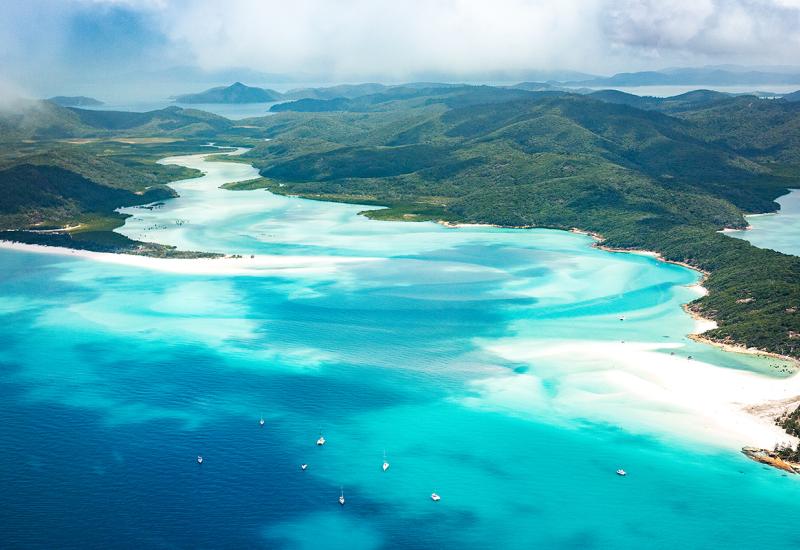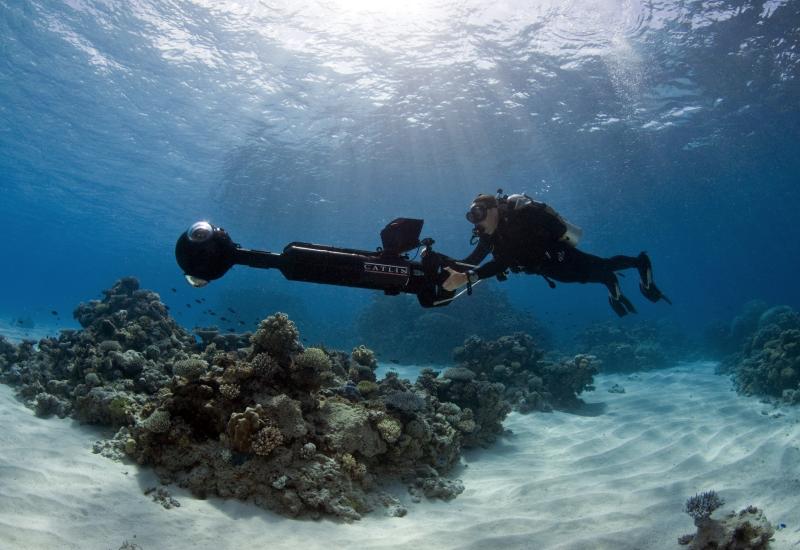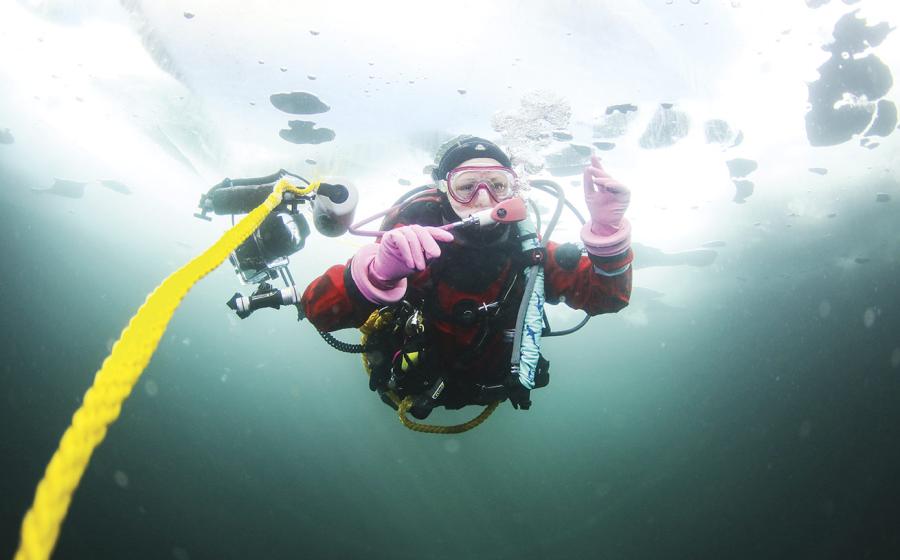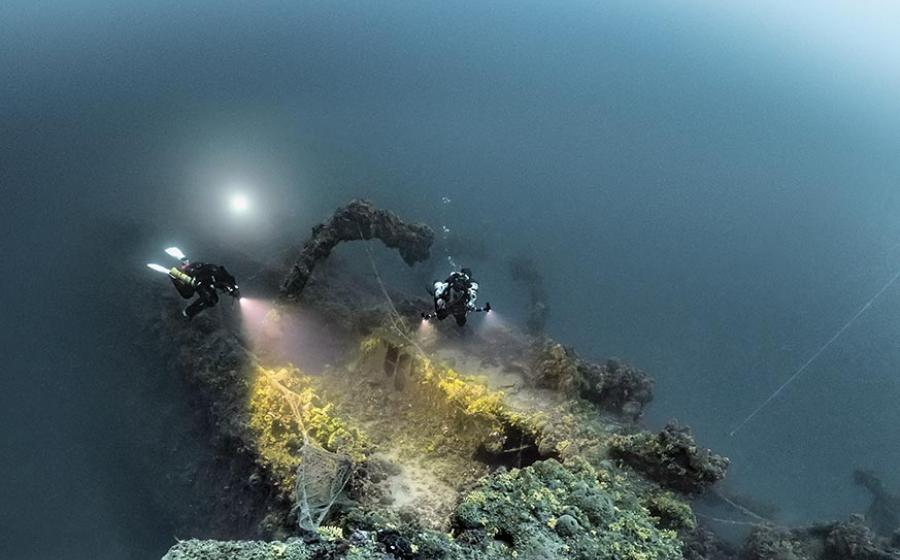The Allure of Odd - A Photographer Journals His Finds in North Sulawesi
The Allure of Odd - A Photographer Journals His Finds in North Sulawesi Some denizens of North Sulawesi were almost smaller than the eye could see, while others were larger than life. I ventured into this wonderland five times a day for just over a week. With each descent, I emerged into a different scene, to dive among the mystical and colorful slugs, seahorses, scorpions, devils, wasps, turtles and frogs everywhere. We dived the side of a dormant volcano and rode a magic carpet across cliff faces. Thus represents the daily grind here. Lewis Carroll, eat your heart out.
Coral Triangle, Meet the Ring of Fire Within an hour of touching down at the Manado airport, and after 24 hours of traveling from New York City, I had returned to a land that has become my home away from home after many visits. On the western edge of a series of volcanic belts and oceanic trenches otherwise known as the Pacific "Ring of Fire" and in the middle of the "Coral Triangle" in Indonesia, the world's largest archipelagic state, thrive some of the most biologically diverse marine ecosystems on the planet. North Sulawesi is a distinct Indonesian province on the amoeba-shaped island of Sulawesi. It has a wide range of diving, from the beautifully odd critters in Lembeh Strait the world's muck diving capital to the walls, reefs and large sea turtles of Bunaken National Marine Park. Healthy reefs, great visibility and critters galore.
Critters & Currents There are, in fact, four distinct diving areas around North Sulawesi the sheer walls and giant turtles of Bunaken Marine Reserve, the islands of Bangka and Gangga to the north, and the sloping patch reefs of the mainland, south of the capital city of Manado. My 10-day itinerary, primarily aboard the North Sulawesi Aggressor, would take me to the best of these areas.
From the surface, Batu Mandi is a series of sharp rocks just breaking the surface about 300 feet from shore. Once underwater, however, it becomes apparent that these rocks are the very top of an isolated ledge jutting out from shore that leads to an abrupt drop-off amid the currents. It is this topography that lends itself to the unique filter-feeding forest that exists here.
Fortunately, the three dives we made here were free from extreme currents, but the large sea fans and congregations of crinoids in numbers that I have yet to see anywhere else indicate that this was not usually the case. Large red and yellow fans were crowned by crinoids as they swayed in the gentle-but-steady currents off Bunaken Island. Schools of triggerfish, bannerfish and butterflyfish flittered and swirled about. Colorful sponges adorned the walls, often neighboring and contrasting the vibrant soft corals, polyps proudly extended and feeding. The reef tops were hard-coral Edens awash in magical flickering beams of sunlight, which complemented the schools of anthias fluttering about. With each dive came a new experience.
On the first dive, our guides Ferry and Richmond scouted a pair of a species of pygmy seahorse (Hippocampus Pontohi), reportedly first discovered nearby in Bunaken in 2003 by another skilled local dive guide and the only species I had yet to photograph. Upon close examination, we found a group of no less than four, and possibly more. It just seemed odd that these delicate creatures were on a wall that normally experiences ripping currents, albeit they were well protected from any possible current in their location. Not surprisingly, many of the Aggressor guests enjoyed this site as much as I did, so we returned for a night dive, which produced three Spanish dancers including one discovered midwater, gracefully twirling its way across the wall. It seemed as if every sea fan had a resident xenon crab, and every crinoid had a clingfish or shrimp. I even found a vivid purple urchin with a resident pair of urchin shrimp.
The Mecca of Muck The Lembeh Strait is a mecca of oddities and rarities. The volcanic black sand is a magic dust sprinkled on the ocean floor to produce surprises on nearly every dive. You can dive the same site again and again, and depending on the currents and mysterious forces, the magical dust will yield a mélange of bizarre critters. The most-productive places to explore are rubble and sand zones with pieces of garbage and miscellaneous detritus strewn about. Each object, whether man-made (abandoned bucket, bottle, shoe or rope) or natural (log, leaf or coconut), acts as an oasis for critters of all varieties.
Beyond the muck, the far northern reaches of Lembeh Island are lush coral slopes, with sites such as California Dreaming and Angel's Window, named for a massive swim-through at about 85 feet. At Aer Perang, we found an otherworldly, purple paddle-flap Rhinopias. There are several species of Rhinopias, a member of the scorpionfish family. They have earned their place as an iconic addition to the underwater photographer's portfolio.
Species that might be rare in other destinations are common in Lembeh. On 13 dives in more than three days, our list included the flamboyant cuttlefish; Rhinopias; several frogfish species, including the giant, oscillated, painted, clown and hairy varieties; ornate, robust and thin ghost pipefish; stargazers galore; two species of pygmy and a zebra-snout seahorse; peacock flounder; snake eels; various dragonets, including the showy mandarinfish; cockatoo and spiny waspfish; devilfish; pegasus seamoths; and countless shrimp-goby pairs. Of course, I have to give our guides Ferry and Richmond credit for spotting many of the more-camouflaged critters. Love must have been in the air (water), as it seemed that every species of nudibranch was found in mating pairs, and they subsequently became subjects of my voyeuristic camera.
To the North The pace certainly changed at Sahaong Dua, a small pinnacle in the center of a protected cove. Moments after our expeditious decent, a movement from behind a giant barrel sponge at about 85 feet caught my eye. As I approached the sponge with as much Zen-like ninja stealth as possible for a bubble-blowing monster with a gangly camera system, a sizable lone bumphead parrotfish emerged. I followed slowly as the giant coral grazer led me to its herd of brethren, each larger than I. Apparently, I stumbled across a cleaning station. They toyed with me by submerging to a depth that was visible yet not sensible, and a glance at my computer indicated it was time to ascend or risk significant deco time.
Our last day on the Aggressor before heading back brought us to Goldfish Bowl, just off Gangga and Lehaga islands. At a depth of roughly 30 feet, healthy Acropora staghorn coral fields gave way to a unique rubble zone packed with hundreds of anemones and resident clownfish. Nearby, toward shore, a barren sand flat caught my attention. I became mesmerized by the geometric ripples in the sand and the patterns of light glimmering and alighting over the peaks and valleys of the seafloor. I spent the remainder of the dive kneeling in the sand watching the light show. It was a fitting end to a wonderful performance.
The Guide to North Sulawesi Average water temperature: 76-80°F What to wear: 3-5 mm full wetsuit Average visibility: Lembeh: 25-40 feet; Bunaken, Bangka and Gangga: 50-100 feet When to go: diving is possible year-round, but the rainy season is December-March
Must Do Visit Tangkoko Nature Reserve, a protected area on the mainland side of the Lembeh Strait. The park helps conserve many endemic species, including the smallest primates on Earth and possibly the inspiration of the character Gizmo from Gremlins the palm-size, nocturnal tarsier. To see these miniature primates, our guide led us to a ficus tree in the middle of the forest. We soon found ourselves among other guides and guests, who also showed up for the twilight emergence of a family of tarsiers, residents to this particular tree. As the sun waned, the first of what would be a group of about six tarsiers began to appear amid the tangled aerial root system. Then came a surprise one of the females was carrying a baby.
Must Dive Batu Mandi: A sheer wall smothered in filter-feeding sea fans, encrusting sponges and crinoids as far as the eye can see, and complete with tons of critters.
Goldfish Bowl: A rare, pristine field of staghorn coral speckled with hundreds of anemones of varied colors and clownfish of various species.
Mandolin: This corner of Bunaken Island packed with an abundance of colorful soft coral, large sponges, sea fans, red ship corals and a gorgeous reef top.
Sahaong Dua: A narrow pinnacle in the lee of Bangka Island. Dive the top for jam-packed soft corals. Dive deeper to find a cleaning station for giant bumphead parrotfish.
Jahir, Hairball, Aer Perang: It's hard to settle on a best Lembeh dive, as it changes often. Just get there! Ask the dive guides which sites are hot that week they'll know.
Picture This Based in a location that could not offer greater diversity for photographers, the 107-foot-long North Sulawesi Aggressor was customized to fit the needs of divers whether they tote cameras or not. With 110-volt power on board, plenty of plugs, as well as computer stations, the boat is a veritable digital photo lab. In the gear area, dry tables are available for setup and breakdown, and compressed air is available to dry housings. One of the three onboard instructors (six crew members total cater to up to 18 guests) is also a photo pro, capable of answering shooting questions, helping with setup, pointing out hard-to-find critters and capturing souvenir shots of guests in action underwater. Should any guest aspire to become an underwater photographer, he can take PADI's Digital Underwater Photographer Specialty, making use of the rental camera and video-camera equipment aboard the vessel. Four daily dives (done from the yacht's two skiffs), plus three optional night dives per week, add up to 23 opportunities to shoot the best of North Sulawesi. sportdiver.com/aggressor
South Sulawesi The Wakatobi archipelago is a pristine coral-reef paradise lying remotely in the Banda Sea, southeast of Sulawesi. Lush coral walls offer diving at any depth, from reef tops to recreational limits and beyond. Macro critters abound. The biggest challenge is deciding which lens to put on your camera. Your adventure begins with a charter flight to Wakatobi's private airstrip. Diving in Wakatobi is offered via resort or live-aboard. After acquiring the Pelagian dive yacht in 2005, Wakatobi Dive Resort expanded the diving range throughout the northern islands, giving divers access to unique sites that the resort's day boats could never reach, including WangiWangi, Hoga, Kaledupa and Buton. However, to many divers, the resort's house reef is the star attraction. sportdiver.com/wakatobi
North Sulawesi Listings Indonesia Tourism indonesia-tourism.com
North Sulawesi Tourism north-sulawesi.org
Dive Centers Eco-Divers eco-divers.com
Thalassa Dive Center thalassa.net
Two Fish Divers twofishdivers.com
Dive Resort/Hotels Euro-Divers/Hotel Sedona euro-divers.com
Gangga Divers/Gangga Island Resort ganggaisland.com
Kungkungan Bay Resort divekbr.com
Tasik Ria Resort & Spa tasikria.com
Wakatobi Dive Resort (South Sulawesi) wakatobi.com
Live-Aboards North Sulawesi Aggressor aggressor.com
Pelagian Dive Yacht (South Sulawesi) pelagian.wakatobi.com










